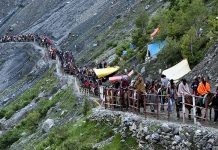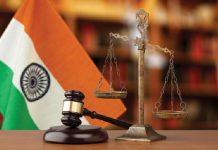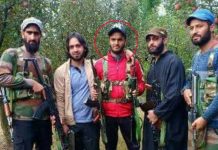
The subtitle for Malala Yousafzai’s autobiography, I Am Malala, seeks to ensure that casual browsers at bookshops aren’t confused in the least. “The Girl Who Stood Up for Education and was Shot by the Taliban,” it proclaims. If a poll were to be held on what people know about the youngest nominee for the Nobel Peace Prize, that subtitle would probably sum up the response of the overwhelming majority.
Ever since she was shot in the head last year by a member of the Tehreek-e-Taliban Pakistan (TTP) while returning home from school, the canonisation of Malala has been swift and sure. It’s every spin doctor’s dream: a teenaged Muslim girl standing up to Muslim fundamentalism and nearly dying as a result, a champion of Western values who can easily be cast as a hero in a complex, alien culture that the West has proven to be historically inept at understanding. A person who can be reduced to a tagline on a book cover. Helen Keller, Anne Frank and Joan of Arc rolled into one.
Of course, the obvious way in which TV anchors, politicians and celebrities have fallen over each other in a mad rush to anoint her and use her to further their own agenda — Rahman Malik, for instance, held up Malala’s parents’ efforts to reach Birmingham and be by her side because he wanted to go with them for a photo-op — has led to a backlash against Malala that ranges from the uncharitable to the downright vicious. She has been accused of lusting for publicity, of blasphemy, of even faking her own shooting in order to leave Pakistan and live comfortably abroad, a claim that thankfully died down once the TTP took responsibility for the attack. Op-ed pieces are regularly churned out by both sides, each accusing the other with increasing viciousness of misunderstanding and misrepresenting Malala’s message.
Reading Malala’s book is an instructive exercise in understanding her, once you get past the sanctimonious declarations she makes; expected, given the number of times she has said she wants to some day be Prime Minister of Pakistan. (“At night I would pray, ‘God, give me Sanju’s pencil [from her favourite television show, Shaka Laka Boom Boom]… I will use it to make everyone happy.’”) It is as much her story as it is of her father, Ziauddin, a Swati activist who was one of the most prominent voices in the Valley against the Taliban. Her ideas are received from her father, whom she idolises. Most of what she has to say about politics begins with some variant of “My father used to say…”
It was Ziauddin who founded the Khushal School where Malala studied, who refused to allow the Taliban to close the school once they invaded Swat. It was he who founded the Swat Qaumi Jirga, which came together to politically oppose the Taliban, largely by highlighting their excesses in the media. As journalists began covering the situation, they found his young, articulate daughter saying much the same things, a far more compelling interviewee. When Christina Lamb, a veteran Pakistan correspondent who has ghostwritten the book, met Ziauddin in Birmingham, he reminded her that she had interviewed him in 2009. “In those days people wanted to talk to me, not my daughter,” he had joked.
Ultimately, it was the fame Malala gained as a result of these interviews that got her shot, not her efforts to promote education, which consisted mainly of delivering platitudes about its importance at different fora. The Taliban by 2012 had largely been driven out of Swat, and there really wasn’t much of an opposition to girls’ education. Shooting Malala was an ill-conceived attempt at reasserting their authority in the Valley, which had been lost through the efforts of the military, not activists. It was a political act, part of a ruthless winner-take-all war in the region.
Earlier this month, Dawn published an obviously satirical piece, where they claimed that DNA analysis of Malala’s earwax and an extended investigation had revealed that Malala wasn’t really Malala, but a Polish Christian called Jane. That she had been killed by an Italian Robert de Niro lookalike (“Those tiny yellow bits that you see in the wax are bits of pizza,” their alleged expert said, asking the writer to look at the assailant’s earwax under a microscope). Despite a disclaimer at the bottom, later also posted at the top, a large section of commenters as well as those on social media were fooled.
The episode demonstrates how, in this cynical age, we are willing to give currency to even the most bizarre conspiracy theories regarding Malala. Incidents like this have been used by the Western media to illustrate that Pakistani society harbours resentment against Malala due to some vague jealousy at the amount of attention she’s been getting.
But in choosing to slay that straw man, Malala’s cheerleaders ignore the real reasons for the dissatisfaction. Malala is by no means the only person in Pakistan, or even Swat, to have spoken out against, or even to be shot for speaking out against the patriarchal notion that girls should not be educated. Neither has she done anything tangible to promote education in the region, though she has donated most of the money she has been awarded to a fund for girls’ education. Nor was she highlighting an extraordinarily bad situation; the province of Khyber Pakhtunwa, of which Swat is a part, has female enrolment numbers that, while by no means great, outperform the country as a whole. Yes, education of girls is an issue of great importance in Pakistani society, but it isn’t a game of heroes and villains, rather a complicated interplay of tradition, political expediency and the volatile state the country finds itself in.

Malala Yousafzai (with Christina Lamb)
Hachette
276 pp | Rs 399
So when Western television anchors use Malala’s story to demonstrate the backwardness of the Taliban, and by extension Islam, they completely ignore the role the West has played in maintaining that volatility. Malala herself hasn’t rocked the boat – she has seldom spoken out against the consequences of the US War on Terror, even though the influx of the Taliban into Swat was a direct result. But when she did speak out, telling Barack Obama that drone strikes would cause terrorism to intensify — there was no mention of the 150 or so schoolchildren that drones have killed in Pakistan — that particular comment was completely ignored in the coverage given to her high-profile meeting.
The American media’s sense of righteousness also displays their Islamophobia – it is a politically correct form of racism that has characterised most of its engagement with this alien culture ever since 9/11. But the same anchors who laud Malala’s courage in standing up to the oppression of religion have for years given free publicity to fundamental Christians who fought to have the theory of evolution expunged from the school curriculum, and to ‘experts’ who deny that climate change is real. They also ignore that Malala and her family are practising Muslims, whose faith in Islam never wavered despite them having to engage in an ideological battle with the Taliban on a daily basis. That despite his bluster, even Ziauddin made a series of compromises with the Taliban in order to keep his school open.
Malala Yousafzai had greatness thrust upon her in the form of an assassin’s bullet. That one brutal, senseless act changed a precocious child with political ambitions into a cause célèbre. But in the reams that have been written about Malala ever since that act, not one concrete suggestion has emerged that will carry tangible benefits for girls, or boys, who are denied an education. Like with all icons, the medium has become more important than the message.
“When people talk about the way I was shot and what happened,” she writes at the end of her book, “I think it’s the story of Malala; ‘a girl shot by the Taliban’; I don’t feel it’s a story about me at all.”












